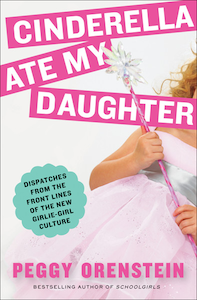

From premature sexualization to the risk of depression to rising rates of narcissism, the potential negative impact of this new girlie-girl culture is undeniable-yet armed with awareness and recognition, parents can effectively counterbalance its influence in their daughters' lives. The stakes turn out to be higher than she ever imagined. In search of answers, Peggy Orenstein visited Disneyland, trolled American Girl Place, and met parents of beauty-pageant preschoolers tricked out like Vegas showgirls. But how dangerous is pink and pretty, anyway? Being a princess is just make-believe eventually they grow out of it. And commercialization has spread the message faster and farther, reaching girls at ever-younger ages. What happens when a feminist who knows exactly how things should be, gets. Somewhere between the exhilarating rise of Girl Power in the 1990s and today, the pursuit of physical perfection has been recast as the source of female empowerment. PEGGY ORENSTEIN is the New York Times bestselling author of Boys & Sex, Don’t Call Me Princess, Girls & Sex, Cinderella Ate My Daughter, Waiting for Daisy, Flux, and Schoolgirls. Peggy Orenstein: Cinderella Ate My Daughter (2011) An intelligent, candid, and often personal work, Cinderella Ate My Daughter offers an important exploration of the burgeoning girlie-girl culture and what it could mean for our daughters’ identities and their futures.

Sweet and sassy or predatory and hardened, sexualized girlhood influences our daughters from infancy onward, telling them that how a girl looks matters more than who she is. Clearly, though, she had touched a cultural nerve: many parents, she discovered, shared her concerns about the significance of this seemingly-retro trend toward the ultra-feminine, and the role the ubiquitous marketing machine plays in packaging and promoting it.” - Courtesy of PeggyOrenstein.The acclaimed author of the groundbreaking bestseller Schoolgirls reveals the dark side of pink and pretty: the rise of the girlie-girl, she warns, is not that innocent. Orenstein, who had garnered a reputation as an expert on girls’ development with her groundbreaking bestseller, Schoolgirls: Young Women, Self Esteem and the Confidence Gap, thought she was simply musing about her own observations and reactions to her young daughter’s obsession with Disney princesses and predilection for the color pink. But ‘ What’s Wrong with Cinderella?‘ swiftly shot to the top of the Times’ website’s ‘most emailed’ list and elicited hundreds of reader responses.

“When journalist Peggy Orenstein published an essay in The New York Times Magazine about the ‘princess-mania’ that has overtaken a new generation of little girls, she was not prepared for a firestorm.


 0 kommentar(er)
0 kommentar(er)
